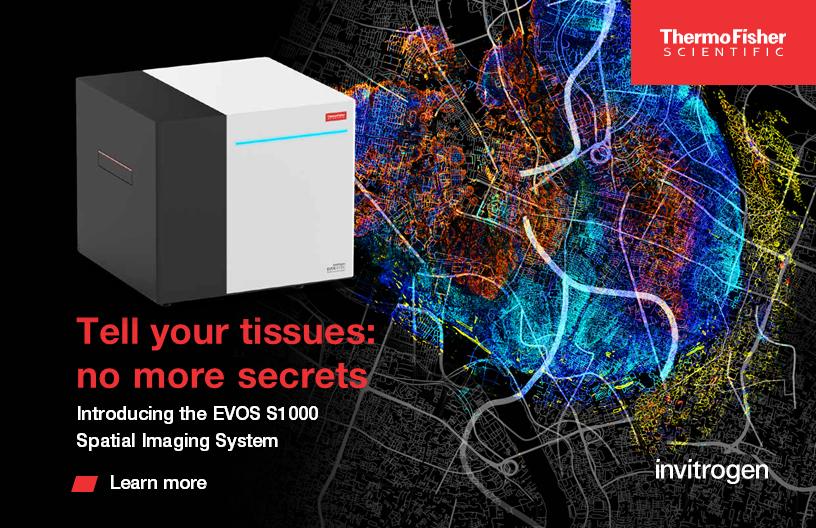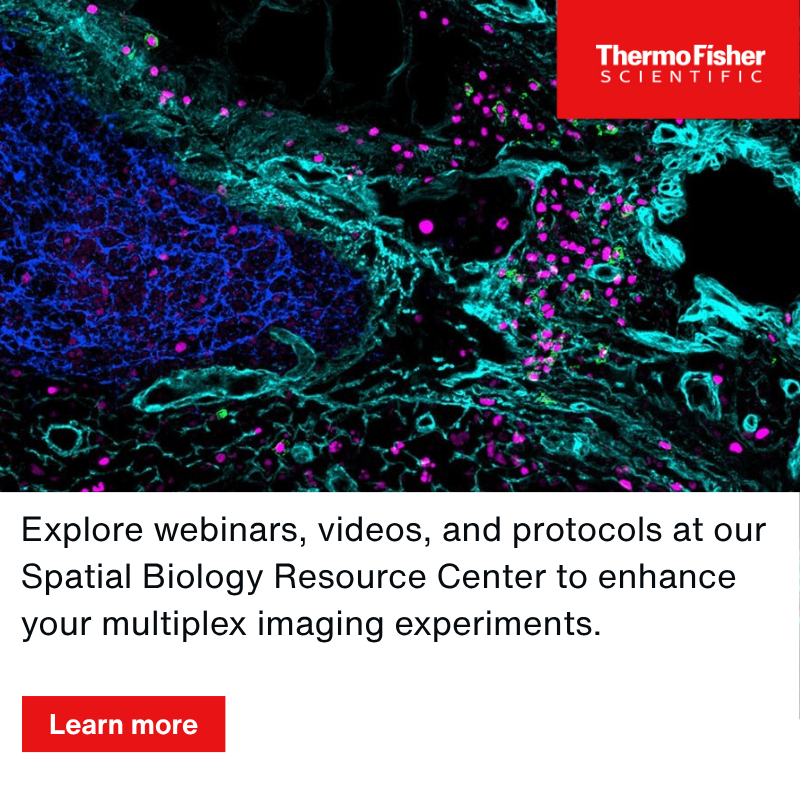Accelerate and simplify spatial proteomics for translational research with the EVOS S1000 Spatial Imaging System
Spatial Biology has emerged as the latest discipline with a demonstrably transformative impact on advancing translational research. In particular, spatial proteomics focuses on the localized mapping of proteins in tissue and is increasingly providing deeper and more comprehensive insights into the therapeutic vulnerabilities of drugs and the molecular drivers of disease as well as helping develop better prognostic markers (Jia et al. 2025). Spectral imaging, a key technology used in spatial proteomics, allows capturing signals emitted by several fluorophores in a single imaging round, thus offering visualization of the tissue spatial diversity while preserving sample integrity. However, current spectral imaging systems are limited in their reagents compatibility, they rely on unmixing algorithms that are cumbersome, and they require additional processing steps. The new Invitrogen EVOS S1000 Spatial Imaging System addresses these spectral imaging challenges by providing a simplified workflow that supports up to 9-plex imaging in a single round, with fast, integrated, automated and reliable unmixing. It is a flexible platform, that has compatibility with commonly available labelling methods and dyes, which can be easily selected by the user to configure acquisition protocols. Additionally, it offers an unmixing quality metric report that allows scientists to pre-assess the image quality of their 9-plex samples, to gain confidence in the outcome of their results even before starting the image acquisition. A demonstration of the EVOS S1000 functionalities will be presented during the webinar. In addition, case studies on the use of the EVOS S1000 Spatial Imaging System will be shown, to demonstrate that the EVOS S1000 is an attractive new tool for advancing research in spatial proteomics.
References:
1. Jia et al. Spatial immune scoring system predicts hepatocellular carcinoma recurrence. Nature. 2025 Apr;640(8060):1031-1041. doi: 10.1038/s41586-025-08668-x. Epub 2025
For Research Use Only. Not for use in diagnostic procedures.
Learning Objectives:
- Discover how EVOS S1000 addresses current spectral imaging challenges
- Outline EVOS S1000 Imaging System capabilities and advantages
- Discuss case studies on the use of EVOS S1000 Spatial Imaging System











